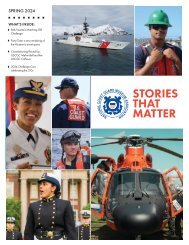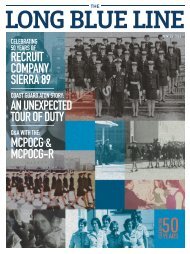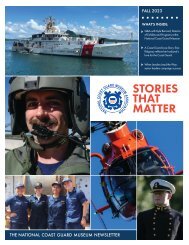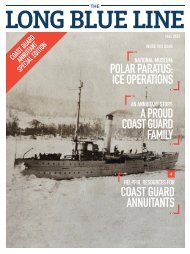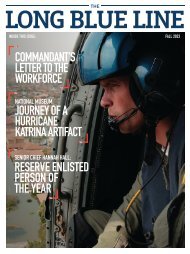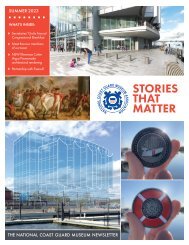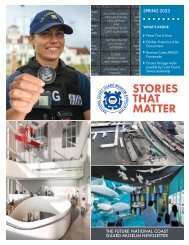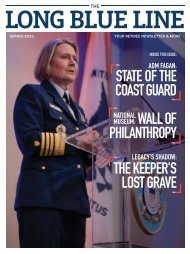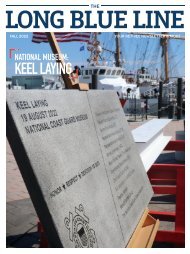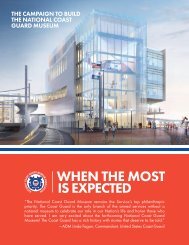The Long Blue Line (Winter 2021)
Quarterly magazine for retirees of the Coast Guard, Public Health Service, and National Oceanic and Atmospheric Association.
Quarterly magazine for retirees of the Coast Guard, Public Health Service, and National Oceanic and Atmospheric Association.
Create successful ePaper yourself
Turn your PDF publications into a flip-book with our unique Google optimized e-Paper software.
Photo provided by the Tantaquidgeon Museum, Uncasville, CT<br />
CPO Harold<br />
Tantaquidgeon<br />
Born in 1904, in Uncasville, CT, Tantaquidgeon’s<br />
formal education ceased at eighth grade.<br />
However, at home, he received a lifetime<br />
education by the elders of the Mohegan Tribe.<br />
Tantaquidgeon served in three branches of the<br />
military: the U.S. Coast Guard, prior to World War<br />
II, <strong>The</strong> U.S. Air Corps during World War II and<br />
the U.S. Army during the Korean War. For his<br />
efforts during WWII, Tantaquidgeon received the<br />
coveted Air Medal.<br />
In 1921, Harold enlisted in the Coast Guard on<br />
board the cable-laying vessel Pequot. In 1927,<br />
Tantaquidgeon advanced to Chief Boatswain’s<br />
Mate becoming the first Native American Chief<br />
Petty Officer in the Service. That same year, he<br />
became officer-in-charge of the 75-foot cutter, CG-<br />
289, and the first Native American to command<br />
a Coast Guard cutter. BMC Tantaquidgeon left<br />
the service in 1930, after commanding CG-289<br />
in Prohibition law enforcement operations for<br />
three years and serving nine years overall. He<br />
returned to Connecticut where he later became<br />
Chief Tantaquidgeon, head of the Mohegan Tribe<br />
from 1952 to 1970.<br />
THE LONG BLUE LINE WINTER <strong>2021</strong><br />
37



